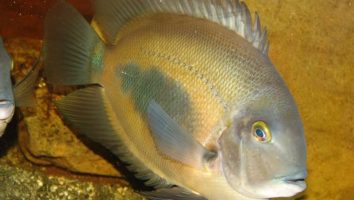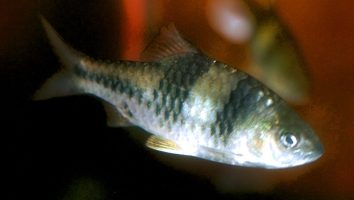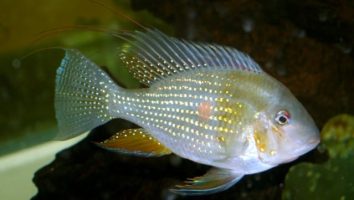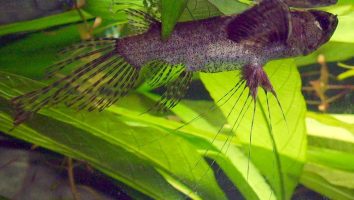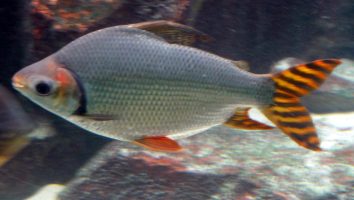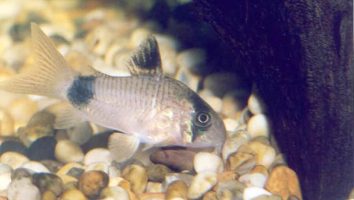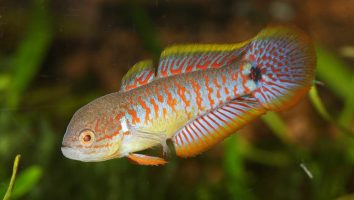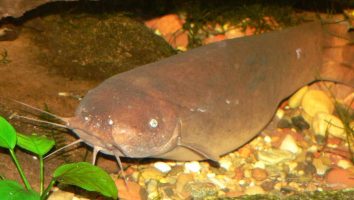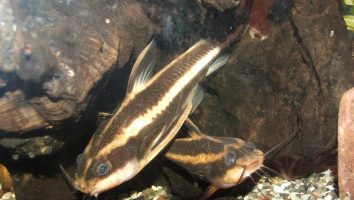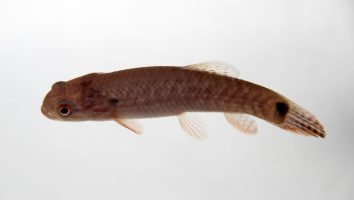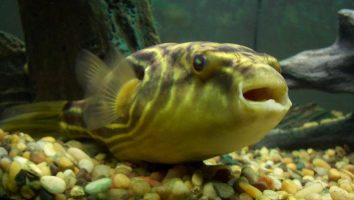The pygmy gourami is a very small freshwater fish that is native to Southeast Asia. They are a very popular fish in the aquarium trade and are known for their bright colors and peaceful nature.
Despite their small size, pygmy gouramis are very hardy fish and can be a great addition to any freshwater aquarium. In this guide, we will go over everything you need to know about pygmy gourami care, including diet, tank mates, and more.
Table of contents
Species overview
The pygmy gourami (Trichogaster pumilus) is a freshwater fish that’s native to the Malay Peninsula, Indonesia, and Thailand.
They’re a peaceful species of fish that does well in community tanks. In the wild, they live in slow-moving waters that are heavily vegetated. This is something to keep in mind when setting up their tank because they’ll need a lot of plants to feel comfortable.
Pygmy gouramis are one of the smaller species of gourami, which is something to keep in mind if you have other fish in your tank. They only grow to be about 2 inches long, so they’re not going to be a threat to any other fish.
These fish are a popular choice for many aquarium enthusiasts because of their bright colors and peaceful nature.
Appearance
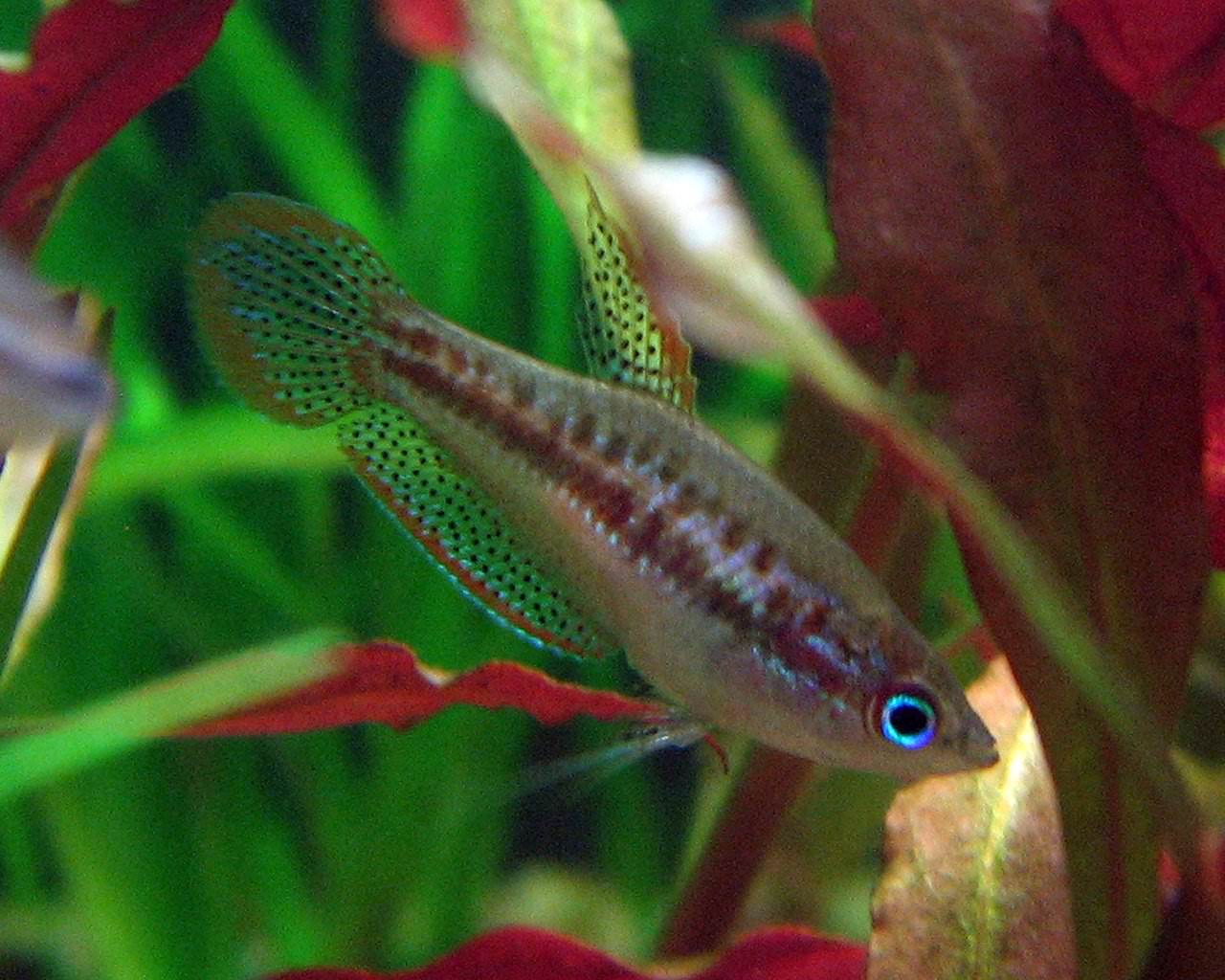
The Pygmy gourami is a very small freshwater fish that is easily recognizable thanks to its bright colors and unique body shape.
Males of this species are a bright blue color all over their bodies. You’ll notice that the blue gets a bit lighter as it goes from their head down to their tail.
The fins on a male Pygmy gourami are also blue, but they have a white leading edge. This is most noticeable on their dorsal and anal fins.
The females of this species are much less colorful. They’re mostly a beige/brown color with a white belly.
The fins on a female Pygmy gourami are also less colorful. They’re a clear/white color with a beige leading edge.
Both males and females have a very unique body shape. Their bodies are very short and stocky with a rounded belly. They have a very small head in comparison to the rest of their body.
The Pygmy gourami also has a very long ventral fin that runs the length of their belly. This fin is very thin and delicate looking.
Lifespan
The average lifespan of a pygmy gourami is 3-5 years. However, with proper care, they can live up to 8 years.
Size
Male pygmy gouramis only grow to be about 1.5 inches long, while females tend to be a bit smaller at 1.2 inches.
Tank
Tank Size
The recommended tank size for pygmy gouramis is 10 gallons. This is the minimum size we recommend but you may be able to get away with a 5-gallon tank if you have a very small fish.
If you’re planning on keeping more than one pygmy gourami, you should add 5 gallons for each additional fish. So, for two pygmy gouramis, you would need a 15 gallon tank.
Water Parameters
The pygmy gourami is a freshwater fish that is found in slow moving streams and marshes of Southeast Asia. In the wild, these fish prefer waters that have a neutral to slightly acidic pH and moderate hardness.
To replicate these conditions in the home aquarium, aim for the following water parameters:
- Water Temperature: 72-82 degrees Fahrenheit
- pH Levels: 6.5-7.5
- Water Hardness: 5-15 dGH
- Alkalinity Levels: 3-8 dKH
What To Put In Their Tank
When it comes to setting up an aquarium for Pygmy Gouramis there are a few things you need to take into account.
First, these fish come from slow-moving waters in the wild. This means that you don’t need a ton of filtration for their tank. A simple sponge filter will do the trick just fine.
Second, Pygmy Gouramis like to have a lot of hiding places. This can be in the form of plants, rocks, or driftwood. There should be plenty of places for them to hide and feel safe.
Third, the substrate in their tank should be soft. This is to protect their delicate fins from being damaged. A good option is to use sand or a very fine gravel.
As for plants, there are a few good choices. Pygmy Gouramis are known to nibble on plants so you need something that can withstand that. Hornwort, Water Wisteria, and Java Moss are all great options.
Common Diseases
Pygmy gouramis are a fairly hardy fish, but they’re still susceptible to a few diseases. The most common one is ich, which is a parasite that can affect any freshwater fish.
This will show itself as white spots on the body, fish, and gills of your fish. We won’t do a full ich treatment guide here (there are plenty of those online) but it’s something you need to take very seriously if it affects your flowerhorn.
The other disease you might see in your pygmy gourami is called finrot. This is a bacterial infection that often affects the fins of fish.
The most common symptom is ragged or torn fins, but it can also lead to open wounds and ulcers. This is a very serious infection that can be fatal if not treated, so be sure to keep an eye out for it!
The best way to prevent these diseases is to maintain a clean and stable tank. This will go a long way in keeping your fish healthy and happy!
Behavior & Temperament
The Pygmy Gourami is a shy fish that does best in a tank with plenty of hiding spots. In the wild, they are found in slow-moving waters with dense vegetation.
The Pygmy Gourami is a peaceful fish that gets along with most other tank mates. They are not aggressive, but they may nip at the fins of other fish if they feel threatened.
The Pygmy Gourami is a timid fish that does best in a tank with plenty of hiding spots. In the wild, they are found in slow-moving waters with dense vegetation.
The Pygmy Gourami is a peaceful fish that gets along with most other tank mates. They are not aggressive, but they may nip at the fins of other fish if they feel threatened.
Tank Mates
The best tank mates for pygmy gouramis are other peaceful species that occupy different parts of the water column.
Since pygmy gouramis are bottom-dwellers, you don’t want to add fish that stay near the bottom as well. This can lead to territorial disputes.
It’s also important to find fish that can tolerate the same water conditions. Pygmy gouramis come from slow-moving waters in Southeast Asia.
As a result, they prefer warm water with a neutral pH.
Some good tank mates for pygmy gouramis include:
- Neon Tetra
- Cardinal Tetra
- Rummy Nose Tetra
- Dwarf Corydoras
- Ghost Shrimp
- Amano Shrimp
Breeding
Pygmy gouramis are pretty easy to breed in captivity. However, there are a few things you need to do to set up the perfect breeding environment.
First, you need to find a pair of pygmy gouramis. These fish are very small, so it’s best to buy them from a reputable dealer. Once you have your pair, it’s time to set up the breeding tank.
The breeding tank should be at least 10 gallons, but 20 gallons is even better. The water should be soft and acidic, with a pH between 6.0 and 7.0. The temperature should be between 78 and 82 degrees Fahrenheit.
You’ll also need to add some plants to the tank. Pygmy gouramis like to lay their eggs on plants. Java moss is a good option.
Once the tank is set up, it’s time to add the pygmy gouramis. These fish are pretty territorial, so it’s best to add the male first. Let him acclimate for a few days before adding the female.
The female will start to lay eggs a few days after she’s added to the tank. The male will fertilize them. Once the eggs are fertilized, the female will eat them. This is normal behavior, so don’t worry.
The fry will hatch a few days later. They’ll be very small, so you’ll need to feed them live foods. Baby brine shrimp is a good option. Once they’re big enough, you can start feeding them flakes or pellets.
Conclusion
The Pygmy Gourami is a great fish for beginner aquarists. They’re easy to care for and are very peaceful, making them a perfect addition to a community tank.
While they are a small fish, they have a lot of personality and are sure to bring some life to your tank.
If you’re looking for a low-maintenance fish that is still interesting and fun to watch, the Pygmy Gourami is a great choice!

